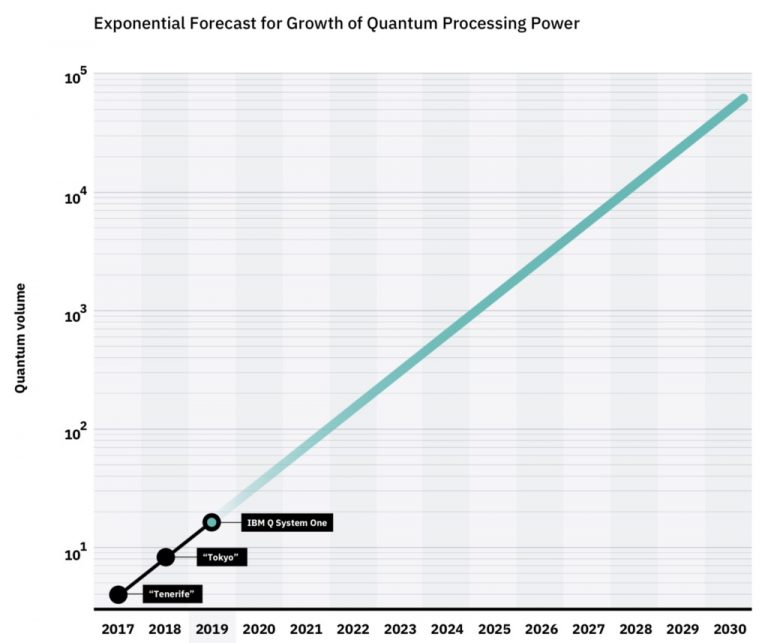Forward-looking: Most characterize the performance of a quantum computer with how many qubits it has. Not entirely satisfied, IBM has developed what it believes is a metric that paints a more vivid overall picture of full-system performance.
Quantum Volume is a metric that takes into account gate and measurement errors and circuit software compiler efficiency plus device cross talk and connectivity. It's this metric that IBM is using to chart a path forward towards its goal of achieving what it calls Quantum Advantage in the 2020s.
IBM designates Quantum Advantage as a significant performance advantage over today's classical computers. The term "significant" is defined as either a quantum computation that is hundreds or thousands of times faster than a classical computation, one that needs a smaller fraction of memory required by a classical computer or one that makes something possible that simply isn't possible today with a classical computer.

IBM Q 5 Tenerife, a five-qubit device, has a Quantum Volume of four while the IBM Q 20 Tokyo, with 20 qubits, has a Quantum Volume of eight. Results from the IBM Q System One, unveiled earlier this year at CES, indicate its Quantum Volume is just north of 16. This means that IBM has been able to double Quantum Volume each year since 2017.
IBM concedes that while Quantum Volume is useful as a single number benchmark, additional data such as measuring how entangled qubits are on a device can be used to gauge even more information about system performance.
IBM will be presenting its latest quantum research at the American Physical Society meeting this week in Boston.
Lead image courtesy plotplot via Shutterstock
